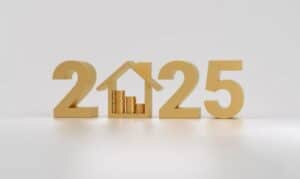Homeowners Associations (HOAs) are a vital part of a well-run, well-kept, and well-organized community. A good HOA ensures that a private community looks attractive and pristine, and helps make it a great place to live. Essentially, a Homeowners’ Association is the catalyst that turns a block of condos from somewhere to live into a genuine community.
Setting up and running an HOA isn’t always the simplest of tasks, particularly when it comes to financial matters. HOA budgeting can often be a challenge, even for the savviest of HOA managers.
The HOA is formed early, prior to sales, and it is important that the budget be updated annually. Even though all residents are members, the HOA Board is usually made up of volunteers, who may or may not be knowledgeable of budget items. Cash flow is still hugely important. Luckily, there are several things that an HOA Manager can do to streamline all the HOA processes.
If you’re looking for help and advice in creating a cost-efficient Homeowners’ Association budgeting process, or just want to improve the way your community is currently run, keep reading for some helpful HOA budgeting tips!
Tip 1: Create a strategic plan
The key to creating an effective plan is to evaluate where the HOA is presently and then explore and analyze the HOA’s long-term goals. Long-term planning allows the HOA to ask some tough questions of itself and of the community about its current and future expenses, and how the community wants to develop and improve.
The first step in a long-term strategy is to create an action plan based on the Homeowners’ Association’s objectives. Relevant, achievable, and measurable goals should be assigned to each part of the project to ensure that every section can be handled competently and that success is measured and analyzed.
One of the most important aspects of any strategy is flexibility. No plan can predict the future with complete accuracy. So, allow for changes in circumstances, and regularly revisit the strategy to check in on it and update it, allowing for the most effective results. Rigidity should be avoided at all costs!
Tip 2: Assess maintenance and utility costs
Annual evaluation of the maintenance and utility costs is one of an HOA’s most important tasks, and doing this correctly is a crucial part of keeping your HOA dues cost-effective. The HOA Board must review its financial history and operating budget each year, to ensure that the HOA is adequately prepared for unexpected expenditures.
Maintaining reserve funding and an adequate operating budget allows an HOA to cover maintenance and utility costs. It helps to avoid exposing their residents to unexpected and unpleasant additional costs.
Operational funding should cover ongoing, regular costs such as maintenance, utility bills, landscaping, accounting and legal fees, and fixed costs like taxes and insurance. Reserve funding is a separate issue that we will touch on later but is designed for scheduled replacement and repairs, not emergencies or unexpected occurrences.
Undertaking a proper assessment of past maintenance and utility costs also gives HOAs the potential to optimize and lower these costs, and those of other vendors, for the future.
Tip 3: Analyze your reserve fund
How you manage your reserve fund can make a tremendous difference in how well-run your HOA is, and what its long-term prospects are. Your reserve fund is your safety net, and managing it is vital for your community’s investments and the longevity of your HOA.
You must be aware of all long-term liabilities and obligations, so you can understand when it’s appropriate to use reserve funds and when not. Understanding the reserve fund’s purpose is hugely important, as a misuse of reserves does your residents a disservice and can lead to problems later down the line (and can even leave you legally vulnerable). Recurring liabilities or capital costs, for example, should never come out of the reserves, and always ensure that the fund is at an appropriate level.
Not having enough funds to pay for repairs or emergencies is a dangerous situation, and having to turn to your residents for extra capital is never a good look. It’s always a good idea to make sure there’s enough HOA income to put aside a percentage for special assessments or unforeseen large expenses.
Tip 4: Calculate your Annual HOA Assessment
Calculating HOA assessments for the coming year is part of the HOA Board’s job, and the one that can come with the most push back from residents. If you’ve planned well, then assessment increases should be minimal, and you’ll still be able to maintain and improve the community.
How do you determine the HOA fees for the year? The process is simple once you know how to do it.
The key is to take into account all relevant expenditures throughout the year, including:
- maintenance,
- utilities,
- salaries,
- vendors,
- insurance,
- management fees and,
- reserve funds.
It is also recommended to build in a “contingency cushion” to address minor variables.
The monthly expenses amount is divided by the number of households in the HOA (care should be taken to include variable assessments, if the dues are structured to vary based on unit size).
While low dues will initially gain you favor with your residents, insufficient income will lead to poor quality service and a lack of maintenance in the long run. If you don’t have sufficient funds to carry out proper maintenance, the whole community suffers.
Tip 5: Share your budget with your community
Finally, good communication within your community always tends to help day to day operations run more smoothly.
When it comes to budgets and financial matters, this is even more important. Making an annual budget easy to understand and being transparent with your residents helps build trust and confidence and make cost increases easier to sell.
You can be transparent by including a notes column in your budget to explain line items in ways that your residents will understand. It’s also good practice to include a comparison column, which lets the community compare income and expenditure from year to year. Accuracy is vital, as is checking and rechecking to ensure that everything is accounted for in the operating budget. Plus, a cover letter gives the HOA a chance to demonstrate how they have come to the final budget and explain any cost increases or changes in assessments.








